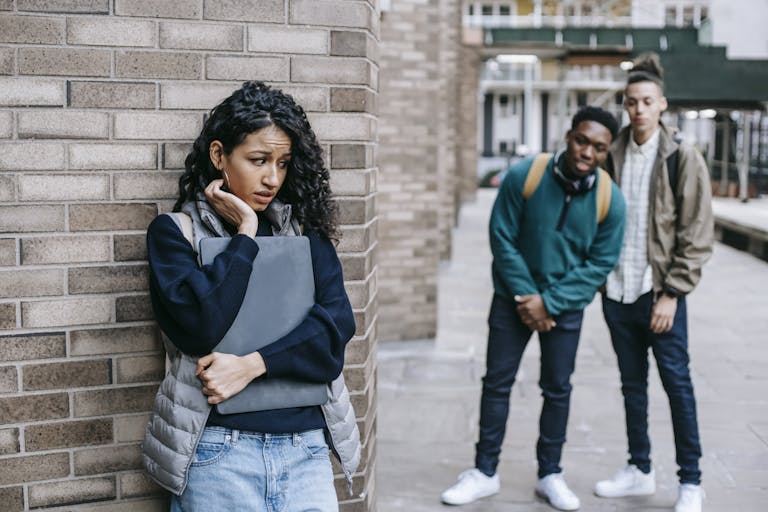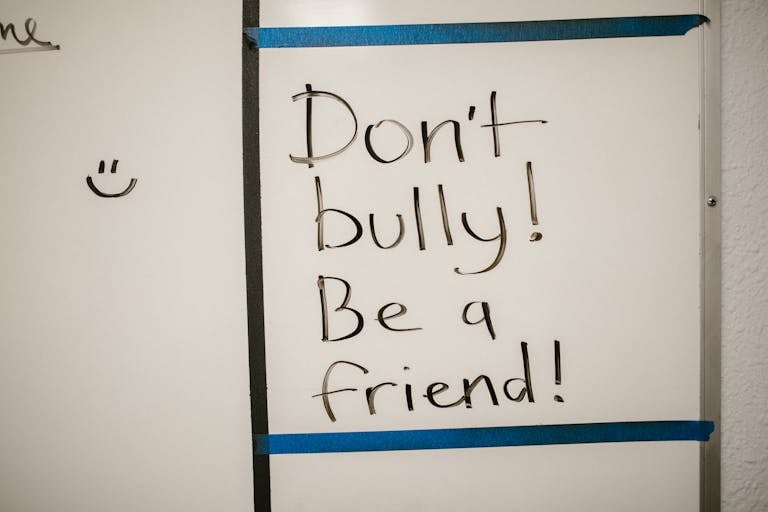Empowering Victims of Bullying: A Comprehensive Guide for Parents and Students

Empowering Victims of Bullying: A Comprehensive Guide for Parents and Students
Bullying is a serious issue that affects countless students, leading to emotional, psychological, and even physical harm. If you or your child is the victim of bullying, it’s essential to take proactive steps to address and stop the behavior. Here’s a comprehensive guide on what you can do to protect yourself or your child.
Understanding Why Bullies Target
Bullies often seek out individuals they perceive as easy targets—those who they believe won’t fight back or whom they see as “different” in some way. This perceived difference could be anything from appearance to behavior, making it easier for bullies to exploit and demean their victims. Understanding this can help in strategizing your response.
Immediate Response Strategies
- Silent Treatment: If the bullying is verbal or involves name-calling, one of the most effective strategies can be to ignore the bully. Giving them the silent treatment, although challenging, can often lead to the bully losing interest as they thrive on getting a reaction. Pretend they do not exist, which can frustrate them and may lead them to move on to another target.
- Cyberbullying Response: In cases of online bullying, take immediate action by blocking the bully on all social media platforms. Set your profiles to private, ensuring only trusted individuals can interact with you. If the bullying continues, consider temporarily deactivating your accounts to remove yourself from the bully’s reach. When they attempt to confront you in person, you can feign ignorance about their online activities, which they find particularly frustrating.
Escalating the Issue: When Bullying Turns Physical
When emotional bullying escalates to physical threats or harm, it’s critical to involve school authorities and potentially law enforcement. Here’s what you should do:
- Document the Incidents: Begin by keeping a detailed record of every bullying incident. Note the date, time, location, what happened, and who was involved. If possible, include the names of witnesses, including teachers or other students. Documentation is your strongest tool.
- Communicate with School Officials: Send regular emails to the school principal or relevant authorities documenting each incident. The email should be concise but detailed, including all pertinent information about the bullying. This creates a paper trail that the school cannot ignore.
- Involve Your Parents: Encourage your parents to also document incidents and send emails to the school. They should include any evidence you gather, such as photos, videos, or witness statements. This strengthens your case and puts additional pressure on the school to take action.
- Leverage Technology: If safe and possible, have a friend or trusted peer record incidents of bullying. Video evidence can be powerful in holding bullies accountable and forcing the school to take action.
Severe Physical Bullying: When to Call the Police
If the bullying becomes severe, especially when physical abuse is involved, it’s crucial to take immediate action. In these cases:
- Contact the Police: If your child is physically harmed or threatened with violence, call the police immediately. Document the incident with photographs if possible, and inform the school about the police involvement. This not only ensures your child’s safety but also holds the bully accountable for their actions.
- Inform the School: Simultaneously inform the school administration of the physical abuse and police involvement. This will likely escalate the school’s response and ensure that they take the matter seriously.
Handling Group Bullying: What to Do When Bullies Team Up
Group bullying can be particularly intimidating when bullies recruit others to join in their harassment. These sidekicks often participate because they fear becoming targets themselves. If you find yourself facing a group of bullies, it’s crucial to prioritize your safety by never walking home alone—always stay with friends or family. If the group bullying escalates, especially after school, don’t hesitate to involve the police and report the behavior. At school, make sure to inform a teacher or administrator immediately, as they are responsible for ensuring a safe environment. Building a strong support network of friends, family, and trusted adults can also provide crucial emotional and practical support during these challenging times.
Seeking External Support: Legal and Psychological Assistance
If the school fails to act, it may be necessary to take more significant steps:
- Consult a Lawyer: If the school remains unresponsive, your parents should consult a lawyer experienced in education or child protection law. The threat of legal action often motivates schools to take bullying more seriously. Your lawyer can assist in drafting a letter threatening to sue the school board for negligence and damages if the bullying isn’t addressed.
- Engage a Psychologist: A psychologist can provide your child with emotional support and can also document the psychological impact of the bullying. This documentation can be used in legal proceedings, further emphasizing the school’s failure to protect your child.
- Legal Action: If the situation does not improve, your lawyer may file a lawsuit against the school board. This legal action can hold the school accountable for its negligence and secure compensation for any ongoing therapy or psychological support your child requires.
The Importance of Taking Bullying Seriously
Bullying is a form of abuse, and it should never be dismissed or minimized just because it occurs in a school setting. The emotional scars left by bullying can last a lifetime, so it’s crucial to act swiftly and decisively.
By following these steps, you empower yourself or your child to stand up against bullying and protect your rights. Remember, you are not alone, and there are resources and support available to help you navigate this difficult experience.
References:
- Olweus, D. (1993). Bullying at School: What We Know and What We Can Do. Oxford: Blackwell Publishers.
- Smith, P.K., et al. (2008). Cyberbullying: Its Nature and Impact in Secondary School Pupils. Journal of Child Psychology and Psychiatry, 49(4), 376-385.
- Juvonen, J., & Graham, S. (2014). Bullying in Schools: The Power of Bullies and the Plight of Victims. Annual Review of Psychology, 65, 159-185.
These references provide valuable insights into the nature of bullying, its impact on victims, and the effectiveness of various intervention strategies.



